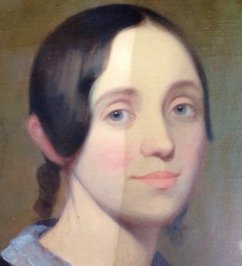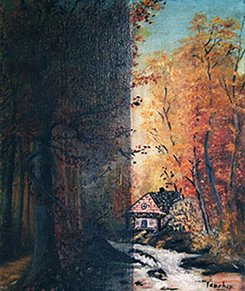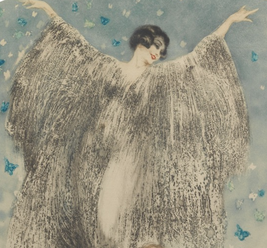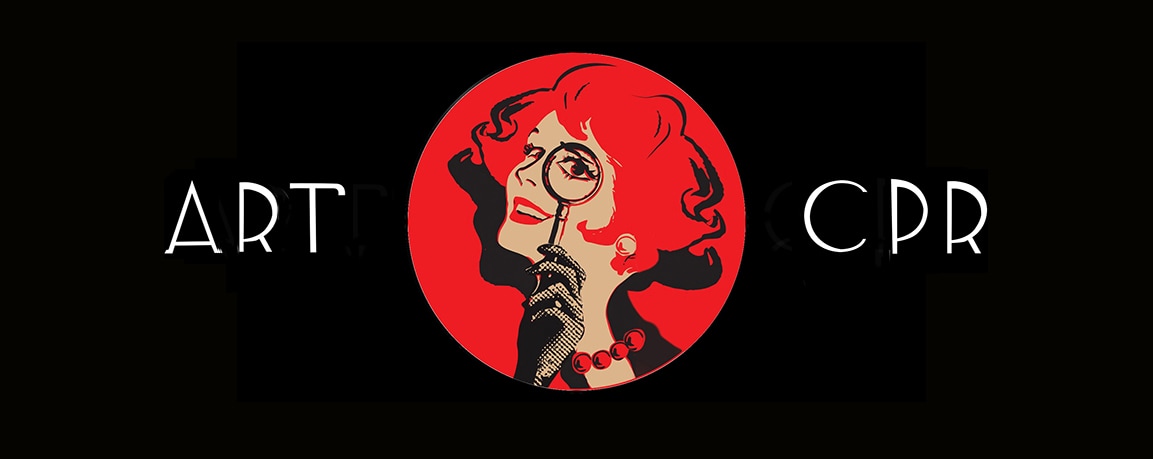|
Featured in:
Milwaukee Journal Sentinel, Wisconsin Woman magazine, OnMilwaukee, Antiques Trader magazine, MPTV appraisal fair, 414 magazine, Milwaukee Fine Home & Living Magazine, Shepherd Express, MPTV Art's Page on TV, Wisconsin Arts & Culture Guide |
In-house services
Art owners work directly with the conservator and your art is carefully treated on premises. By fostering a personal relationship with every client and artwork the best results can be achieved. Conservator Monica Mull uses techniques learned from professionals of the Rijksmuseum, Sotheby's, Smithsonian, and DeYoung Museums, along with 20 years of experience. |
Satisfied clients include:
Iron horse hotel, Trinity Church, Lily Pad Gallery, SB Gallery, Paul Davis Restoration, Alfons Gallery, Joann fabrics, Pototsi National Brewery Museum, Masonic Center of Milwaukee, director of MOWA: Museum of Wisconsin Art, Aram Library -Delavan, Two Rivers Historical Society, Weidman Gallery -Los Angeles
Testimonials:
MORE TESTIMONIALS:
***** Dee Becker May 20, 2022
Monica, thank you for restoring the painting and sending the photos. I am very, very pleased with the result. The painting has come to life on my wall. Love it. You da best!!
***** Mary Beth Popchock January 29, 2020
Monica is the ultimate professional. She is extremely talented and her work is of the highest quality. She has performed "artistic miracles" on repairs for many works of art for us. Her conservation work is highly recommended, as well.
***** Dan Chunn July 24, 2018
I have been working with Monica on restoration and framing of my art work for several years. My appointments with her have been enlightening and she has shown great patience with my ignorance. Monica is a great listener and understands my love for my rag paper prints and etchings. When I found out she had her own shop, that was it for me.
***** Kevin Foley March 31, 2018
I am a collector of Grand Rapids pre-prohibition breweriana. In the summer of 2017, I won an auction bid for a damaged, but very unique cardboard advertising sign/calendar from the Grand Rapids Brewing Company - dated 1900. The piece was torn in half, but otherwise intact. I have a few other nice cardboard calendar signs from that brewery and could not pass on this one. I did not previously know of its existence and the date is the earliest in the series of GRBC calendars featuring children as the subject of the advertising. It appeared from the listing photo that all that was needed to restore the sign to “like-new” condition was to join the two halves together and touch up the paint a bit. Problem at the time was I did not know anyone who could do the repair. A phone call to a collecting friend of mine eventually sent me to the studio of Monica Mull. It did not take long in my conversation with her in late November 2017 to realize that my sign would be in very expert hands and repaired as if it were a masterpiece in an art museum. My expectations were completely met several weeks later when the sign/calendar was delivered to me, looking as if it had just come off of the production line! The charge for the repair was absolutely reasonable and Monica kept in touch with me with updates (and pics of the sign that is now featured on her web-site) regularly. My overall rating of her work: 5 stars! 4 aces! 10 paint brushes! highest marks! and amazing! For breweriana collectors: you would be hard pressed to find someone who repairs expensive paintings in art galleries to even reply to an e-mail about your beat up beer sign, much less fix it. Hire Monica and I guarantee you won’t be disappointed.
***** Maureen Dick February 9, 2018
Recently we needed to have an original piece of artwork framed. The artist recommended Monica Mull for the project. She shared some insightful ideas which were greatly appreciated. We are very pleased with the end result.
***** Chuck Elsholz July 3, 2017
Very professional and timely work. Excellent knowledge of the job and great framing skills. Already have another piece there being framed.
***** Dee Becker May 20, 2022
Monica, thank you for restoring the painting and sending the photos. I am very, very pleased with the result. The painting has come to life on my wall. Love it. You da best!!
***** Mary Beth Popchock January 29, 2020
Monica is the ultimate professional. She is extremely talented and her work is of the highest quality. She has performed "artistic miracles" on repairs for many works of art for us. Her conservation work is highly recommended, as well.
***** Dan Chunn July 24, 2018
I have been working with Monica on restoration and framing of my art work for several years. My appointments with her have been enlightening and she has shown great patience with my ignorance. Monica is a great listener and understands my love for my rag paper prints and etchings. When I found out she had her own shop, that was it for me.
***** Kevin Foley March 31, 2018
I am a collector of Grand Rapids pre-prohibition breweriana. In the summer of 2017, I won an auction bid for a damaged, but very unique cardboard advertising sign/calendar from the Grand Rapids Brewing Company - dated 1900. The piece was torn in half, but otherwise intact. I have a few other nice cardboard calendar signs from that brewery and could not pass on this one. I did not previously know of its existence and the date is the earliest in the series of GRBC calendars featuring children as the subject of the advertising. It appeared from the listing photo that all that was needed to restore the sign to “like-new” condition was to join the two halves together and touch up the paint a bit. Problem at the time was I did not know anyone who could do the repair. A phone call to a collecting friend of mine eventually sent me to the studio of Monica Mull. It did not take long in my conversation with her in late November 2017 to realize that my sign would be in very expert hands and repaired as if it were a masterpiece in an art museum. My expectations were completely met several weeks later when the sign/calendar was delivered to me, looking as if it had just come off of the production line! The charge for the repair was absolutely reasonable and Monica kept in touch with me with updates (and pics of the sign that is now featured on her web-site) regularly. My overall rating of her work: 5 stars! 4 aces! 10 paint brushes! highest marks! and amazing! For breweriana collectors: you would be hard pressed to find someone who repairs expensive paintings in art galleries to even reply to an e-mail about your beat up beer sign, much less fix it. Hire Monica and I guarantee you won’t be disappointed.
***** Maureen Dick February 9, 2018
Recently we needed to have an original piece of artwork framed. The artist recommended Monica Mull for the project. She shared some insightful ideas which were greatly appreciated. We are very pleased with the end result.
***** Chuck Elsholz July 3, 2017
Very professional and timely work. Excellent knowledge of the job and great framing skills. Already have another piece there being framed.
Providing Services For:
art collectors, art investors, brewery collectible enthusiasts, family heirloom caretakers, antique dealers, art galleries, artists, frame shops, interior designers, churches, historical societies, disaster response companies, insurance companies.... & anyone who loves art!
art collectors, art investors, brewery collectible enthusiasts, family heirloom caretakers, antique dealers, art galleries, artists, frame shops, interior designers, churches, historical societies, disaster response companies, insurance companies.... & anyone who loves art!
Location & Hours
By Appointment Only
Please email me with any questions about art preservation,
or make an appointment.
Email: [email protected]
Phone 414-502-8407
Art CPR studio is located in Milwaukee
Please email me with any questions about art preservation,
or make an appointment.
Email: [email protected]
Phone 414-502-8407
Art CPR studio is located in Milwaukee







